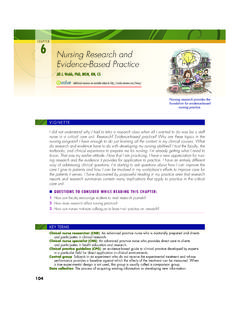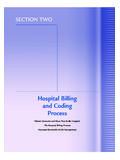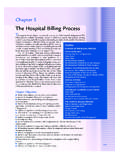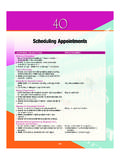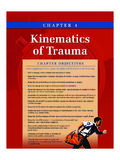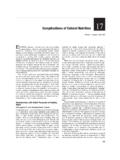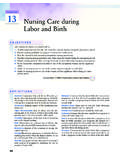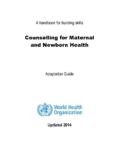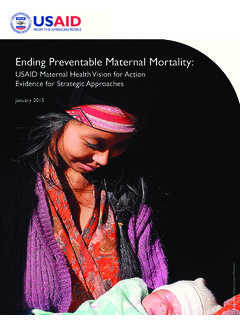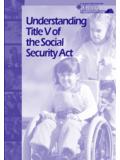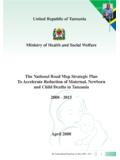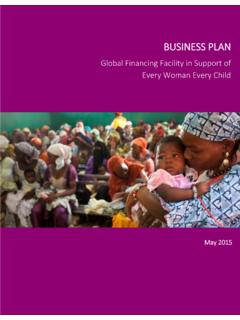Transcription of C hapter Newborn Nutrition and Feeding
1 11/15/05 11:12 AM Page 617. Newborn Nutrition and Feeding C h a p t e r 20. KATHRYN RHODES ALDEN. LEARNING OBJECTIVES. Describe current recommendations for infant Examine nursing interventions to facilitate and Feeding . promote successful breastfeeding. Explain the nurse's role in helping families to Analyze common problems associated with choose an infant Feeding method. breastfeeding and nursing interventions to help Describe nutritional needs of infants. resolve them. Recognize Newborn Feeding -readiness cues. Compare powdered, concentrated, and ready- Explain maternal and infant indicators of effec- to-use forms of commercial infant formula. tive breastfeeding. Develop a teaching plan for the formula- Feeding Discuss benefits of breastfeeding for infants, family. mothers, families, and society. Describe the anatomy and physiology of breast- Feeding . KEY TERMS AND DEFINITIONS. colostrum The fluid in the breast from pregnancy lactogenesis Beginning of milk production into the early postpartal period; rich in antibodies, latch-on Attachment of the infant to the breast for which provide protection from many diseases; Feeding high in protein, which binds bilirubin; and laxative let-down reflex Release of milk caused by the con- acting, which speeds the elimination of meconium traction of the myoepithelial cells within the milk and helps loosen mucus glands in response to oxytocin; also called milk demand Feeding Feeding a Newborn when Feeding ejection reflex (MER).
2 Cues are exhibited by the baby, indicating that mastitis Infection in a breast, usually confined to a hunger is present milk duct, characterized by influenza-like symp- engorgement Swelling of breast tissue brought toms and redness and tenderness in the affected about by an increase in blood and lymph supply breast to the breast, which precedes true lactation; lasts nipple confusion Difficulty experienced by some in- approximately 48 hours and usually reaches a peak fants in mastering breastfeeding after having been between the third and fifth postbirth days given a pacifier or bottle Feeding -readiness cues Infant responses (mouthing plugged milk ducts Milk ducts blocked by small motions, sucking fist, awakening, and crying) that curds of dried milk indicate optimal times to begin a Feeding rooting reflex Normal response of the Newborn to growth spurts Times of increased neonatal growth move toward whatever touches the area around that usually occur at approximately 6 to 10 days, the mouth and to attempt to suck; usually disap- 6 weeks, 3 months, and 4 to 5 months.
3 Increased pears by 3 to 4 months of age caloric needs necessitate more frequent feedings supply-meets-demand system Physiologic basis to increase the amount of milk produced for determining milk production; the volume of milk inverted nipples Nipples invert rather than evert produced equals the amount removed from the when stimulated; interferes with latch-on breast lactation consultant Health care professional who has specialized training in breastfeeding 617. 11/15/05 11:12 AM Page 618. 618 UNIT SIX THE Newborn . ELECTRONIC RESOURCES. Additional information related to the content in Chapter 20 can be found on the companion website at or on the interactive companion CD. NCLEX Review Questions NCLEX Review Questions Case Study Breastfeeding Case Study Breastfeeding Critical Thinking Exercise Formula Preparation WebLinks Plan of Care Breastfeeding and Infant Nutri- tion Skill Infant Feeding G ood Nutrition in infancy fosters optimal growth and development.
4 Infant Feeding is more than the provision of Nutrition ;. it is an opportunity for social, psycho- logic, and even educational interaction between parent and Feeding (Abbott Laboratories, 2003). If breastfeeding rates continue to rise at their current rate, it is likely that the breastfeeding goals of Healthy People 2010 will be attained;. the goals are for breastfeeding initiation rates to reach 75%. and continuance rates at 6 months to reach 50% ( De- infant. It also can establish a basis for developing good eat- partment of Health and Human Services, 2000). ing habits that last a lifetime. Health supervision of infants Although breastfeeding rates have increased across all requires knowledge of their nutritional needs. demographic groups, certain trends still remain. Women least Through preconception and prenatal education and likely to breastfeed typically are younger than 25 years of age, counseling, nurses play an instrumental role in assisting par- have a lower income, are African-American, are primiparas, ents with the selection of an infant Feeding method, which have a high-school education or less, are employed full time ideally will be breastfeeding.
5 Whether the parents choose to outside the home, and participate in the Special Supple- breastfeed or to give their infant artificial breast milk (for- mental Nutrition Program for Women, Infants, and Children mula), nurses provide support and ongoing education. Ed- (WIC) (Abbott Laboratories, 2003; Ryan, Wenjun, & Acosta, ucation of parents is necessarily based on current research 2002). findings and standards of practice. This chapter focuses on meeting nutritional needs for nor- BENEFITS OF BREASTFEEDING. mal growth and development from birth to age 6 months, with emphasis on the neonatal period, when Feeding prac- Human milk is designed specifically for human infants and tices and patterns are being established. Both breastfeeding is nutritionally superior to any alternative. It is bacterio- and formula Feeding are addressed. logically safe and always fresh. The nutrients in breast milk are ideally balanced and more easily absorbed than are RECOMMENDED INFANT those in formula.
6 Breast milk changes over time to meet Nutrition changing needs as infants grow. It contains growth factors that promote development of the brain and gastrointesti- The American Academy of Pediatrics (AAP) recommends ex- nal (GI) system. Breast milk provides immune factors that clusive breastfeeding or human milk Feeding for the first fight illnesses and allergens within the maternal -infant en- 6 months of life and that breastfeeding or human milk feed- vironment (Gartner et al., 2005; Lawrence & Lawrence, ing continue as the sole source of milk for the next 6 months. 2005). During the second 6 months of life, appropriate comple- Numerous research studies have identified the beneficial mentary foods (solids) are added to the infant diet. If infants effects of human milk for infants during the first year of life. are weaned from breast milk before 12 months of age, they Long-term epidemiologic studies have shown that these ben- should receive iron-fortified infant formula, not cow's milk efits do not cease when the infant is weaned, but instead ex- (Gartner et al.)
7 , 2005) tend into childhood and beyond. Breastfeeding has many advantages for mothers, for families, and for society in gen- BREASTFEEDING RATES eral. In discussing the benefits of breastfeeding with parents, it is critical that nurses and other health care professionals Breastfeeding rates in the United States have risen steadily have a thorough understanding of these benefits from both over the past decade, reaching record levels with of a physiologic and a psychosocial perspective (Gartner et al., mothers initiating breastfeeding in the hospital. When their 2005; Lawrence & Lawrence, 2005). Benefits of breastfeed- babies are 6 months old, of mothers are still breast- ing are listed in Table 20-1. 11/15/05 11:12 AM Page 619. CHAPTER 20 Newborn Nutrition and Feeding 619. TABLE 20-1. Benefits of Breastfeeding BENEFITS TO FAMILIES. BENEFITS FOR THE INFANT BENEFITS FOR THE MOTHER AND SOCIETY. Decreased incidence and severity of Decreased postpartum bleeding Convenient.
8 Ready to feed infectious diseases: bacterial menin- and more rapid uterine No bottles or other neces- gitis, bacteremia, diarrhea, respira- involution sary equipment tory infection, necrotizing entero- Reduced risk of breast cancer, Less expensive than infant colitis, otitis media, urinary tract uterine cancer, and ovarian formula infection, late onset sepsis in cancer Reduced annual health care preterm infants Earlier return to prepregnancy costs Reduced postneonatal infant weight Less parental absence from mortality Decreased risk of post- work due to ill infant Decreased rates of SIDS menopausal osteoporosis Reduced environmental Decreased incidence of type I and Unique bonding experience burden related to disposal type 2 diabetes Increases maternal role of formula cans Decreased incidence of lym- attainment phoma, leukemia, Hodgkin disease Reduced risk of obesity, and hyper- cholesterolemia Decreased incidence and severity of asthma and other allergies Slightly enhanced cognitive development Enhances jaw development, de- creasing problems with malocclu- sions and malalignment of teeth Analgesic effect for infants undergo- ing painful procedures such as venipuncture (From Gartner, L.)
9 Et al. (2005). Breastfeeding and the use of human milk. Pediatrics, 115(2), 496-506; Lawrence, R., & Lawrence, R. (2005). Breastfeeding: A. guide for the medical profession (6th ed.). St. Louis: Mosby.). CHOOSING AN INFANT barrassing than breastfeeding. Formula Feeding is often Feeding METHOD viewed as a way to ensure that the father, other family mem- bers, and day-care providers can feed the baby. Some women Breastfeeding is a natural extension of pregnancy and child- lack confidence in their ability to produce breast milk of an birth; it is much more than simply a means of supplying nu- adequate quantity or quality. Women who have had previ- trition for infants. Women most often breastfeed their ba- ous unsuccessful breastfeeding experiences may choose to bies because they are aware of the benefits to the infant. formula feed subsequent infants. Breastfeeding is seen by Many seek the unique bonding experience between mother some women as incompatible with an active social life, or and infant that is characteristic of breastfeeding.
10 The support they think that it will prevent them from going back to work. of the partner and family is a major factor in the mother's Modesty issues and societal barriers exist against breast- decision to breastfeed and in her ability to do so successfully. Feeding in public. A major barrier for many women is the Prenatal preparation ideally includes the father of the baby, influence of family and friends. giving him information about benefits of breastfeeding and There are situations in which breastfeeding is contra- how he can participate in infant care and nurturing (Pollock, indicated. Newborns who have galactosemia should not Bustamante-Forest, & Giarrantano, 2002). be breastfed. Mothers with active tuberculosis or human Parents who choose to formula-feed often make this de- immunodeficiency virus (HIV) infection and those who cision without complete information and understanding of are positive for human T-cell lymphotropic virus type I or the benefits of breastfeeding and the potential hazards of for- type II should not breastfeed.
